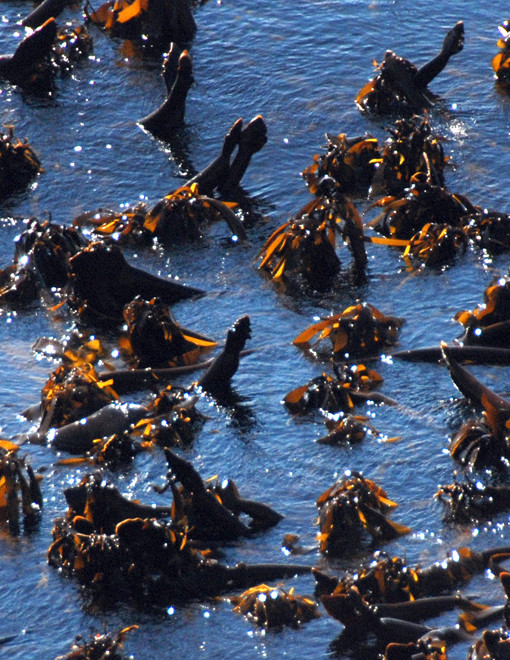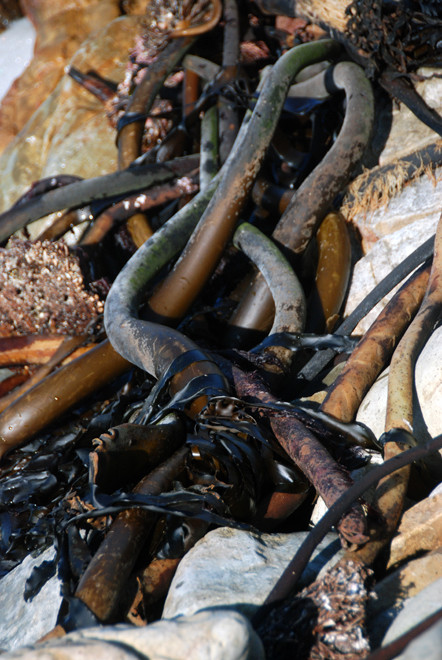X. South African Kelp

Excerpt from Of Sea-bamboo, Split-fan kelp and Bladder kelp:Seeing seaweeds in a new light, G. Maneveldt and R.Frans, Veld&Flora
The kelp species common to the Cape Peninsula and the west coast of South Africa include Sea Bamboo - ecklonia maxima, Split Fan Kelp - laminaria pallida, and Bladder Kelp - macrocystis angustifolia.
Ecologically, the kelp canopy provides an important complex, three-dimensional habitat for thousands of species of fish, invertebrates and other seaweeds. The limpet, Cymbula compressa for example, occurs only on Ecklonia maxima. Kelp beds are among the most productive ecosystems on earth, supporting high primary production levels. This high productivity forms the base of many coastal food webs in cool water environments worldwide. So, both directly and indirectly, they are an important food source for a large variety of invertebrates, fish, mammals and seabirds. Furthermore, kelp are tough and resilient, and stretching into the sea, often for many kilometres, they help break the great force of the waves offering protection to the nearshore ecosystem.
In South Africa, the seaweed industry is based on Ecklonia and Laminaria among some other brown and red seaweeds. Kelp is widely used as a fertilizer and is harvested extensively as feed for commercially farmed abalone. Ecklonia maxima is even used as a nutritional supplement for farm animals. It is also harvested for the production of a very successful plant growth stimulant and has been shown to be a great source of micronutrients.
Internationally, a huge market exists for the harvesting of kelp for alginate production and in South Africa, Ecklonia and Laminaria are very important to this industry.
Nelson Mandela and his comrade prisoners on Robben Island were detailed to collect kelp for Japanese fertiliser producers (see Long Walk to Freedom).
Kelp Products, headquartered in Simonstown, produces and exports plant growth stimulant made from kelp to more than 60 countries.
Their product, Kelpak
is manufactured from the kelp species Ecklonia maxima, which grows only in the clean, cold waters off the Atlantic Coast of Southern Africa. The nutrient rich Benguela current provides perfect conditions for the rapid growth of these giant kelp forests.
Due to the dangerous conditions as well as the sensitive ecology which thrives in these Kelp forests, divers harvest by hand.
Using a strip rotational program ensures a uniform age and size of the raw material, ultimately resulting in consistent activity levels in the end product.
Once ashore the harvested Kelp is immediately transferred to the Kelpak production facility to ensure a fresh raw material for processing (See Kelpak).
The hormone content of the kelp is accessed using 'Cold Cellular-burst Technology' and for interesting information on exploding the myths of seaweed as a fertiliser/growth stimulant see the pdf by this name here at Kelp Products.





